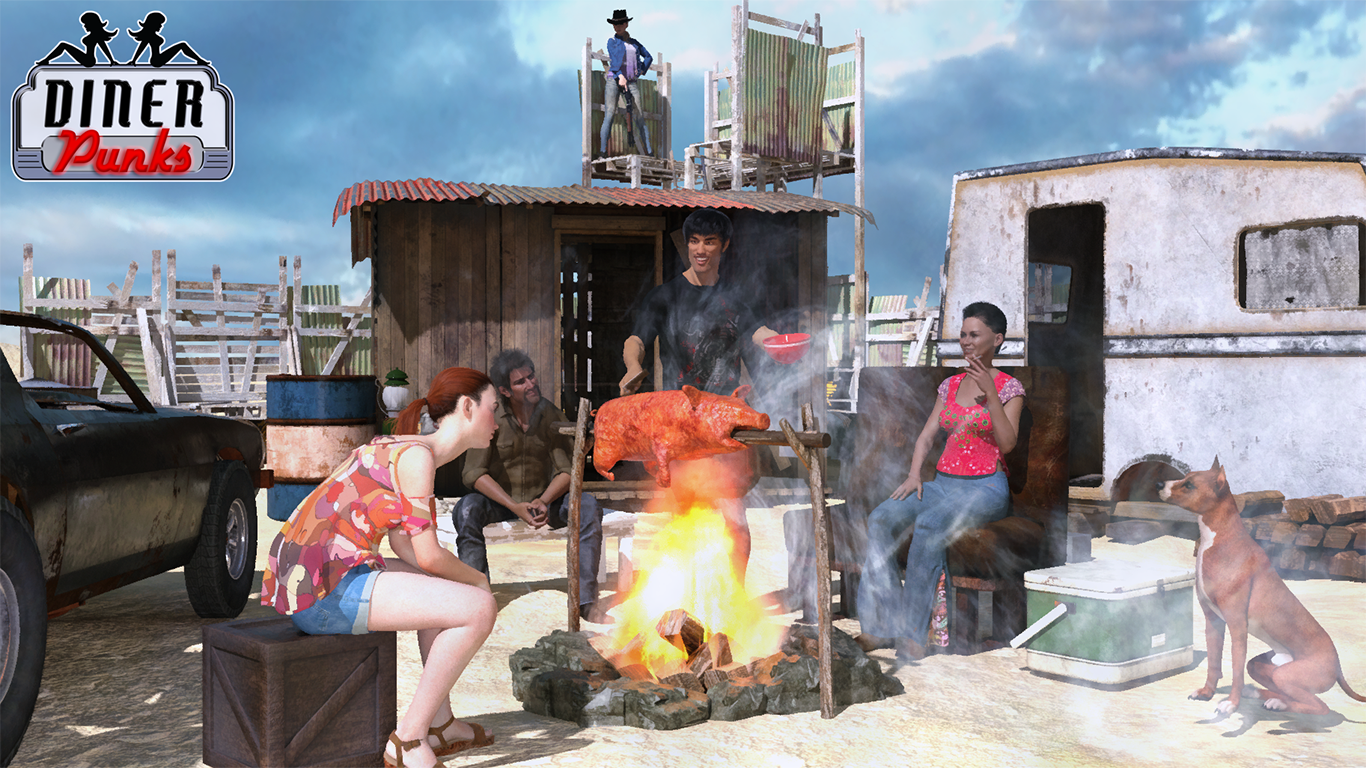We may earn money or products from the companies mentioned in this post.
Hey everyone. The My Name Is Hood zine is now active on Kickstarter. Since I’m using QAGS 3E for the game, I put together a cheat sheet that explains the character stats.
The sheet gives you most of the basics you need to figure out how the system works, but there are a few things that aren’t mentioned explicitly or could use a little more explanation:
- Unlike previous versions of QAGS, Q3E is not a roll-under system. You’re always trying to roll as high as you can. For contested rolls, your target number is the other character’s roll or stat. For other rolls, the GM sets a Difficulty Number.
- Hero Factor tops out at 5 for most games, which means Hero Die tops out at d12. If you need really high-powered characters for a game about gods or cosmic super-heroes or something, you can add some DCC dice and expand Hero Factor range up to 10 (with a Hero Die of d30). My Name Is Hood characters start out at Hero Factor 2.
- After each successful adventure/mission/episode, add 0.1 to your Hero Factor. You ignore the decimal value during the game, but when it rolls over from x.9 to x+1, you level up.
- Gimmick & Weakness aren’t the only way to get Advantage or Disadvantage, but you can only have one or the other on a roll. If there are a mixture of Advantages and Disadvantages at work, the GM decides whether they cancel each other out or, if not, which one wins out.
- The Weirdest Thing About You trait is mostly inspired by Raising Hope, with its characters who eat their hair, sleep with pantyhose on their head, have cybersex while wearing rubber masks, of just collect Porkchester Pigurines.
- Luck Die is either d1, d2, d3, d4, or d5. The GM sets Luck Die based on how well the character’s Gimmick & Weakness balance out. A really powerful Gimmick with Weakness that doesn’t cause many problems means a low Luck Die. A debilitating Weakness matched with a useless Gimmick gives you a high Luck Die. The best case scenario is a reasonably balanced Gimmick/Weakness combo with a Luck Die of d3.
- Part of the reason Luck uses smaller dice is to make it match the range of the Calling ratings. If your Calling applies to the roll, you get to choose whether to add your Calling rating or your Luck Die roll. Since one is a bonus and one is a die, Calling gives you a more predicable roll, while relying on Luck Die yields a slightly swingier result.
- Rap Sheet runs from 0 (upstanding citizen) to 3 (repeat offender). You choose your Rap Sheet score, and a higher score gives you bonuses to other traits (which I just realized I forgot to give the sample character–his Calling should be 1 higher). This one is just for My Name Is Hood.
- Hooks & Hacks probably won’t come up much in a game like My Name Is Hood. They’re basically for nailing down how special powers and stuff work, especially for Gimmicks and Weaknesses that need mechanics beyond improving or penalizing rolls.
- I’m not going to get into Hit Points and Stress Points because My Name Is Hood uses a simplified combat system (it’s a sitcom), so they’ll work a little differently in the zine than in the standard rules.
- The big difference with Yum Yums in the new edition is that they don’t carry over from game to game. You roll your Luck die at the beginning of each adventure to determine starting Yum Yums. At the end of the game, you’ll probably have the option of using your remaining YYs for character improvement (I’m still working out the details of experience/improvement) and some games may have a downtime phase you can carry them into, but they’re gone by the time the next adventure begins.
- Bonds & Beefs was added for My Name Is Hood, but I might add it to the core stats. It seems pretty useful.
So, that’s what a QAGS 3E character looks like. If you want to see more, support the My Name Is Hood Kickstarter.





